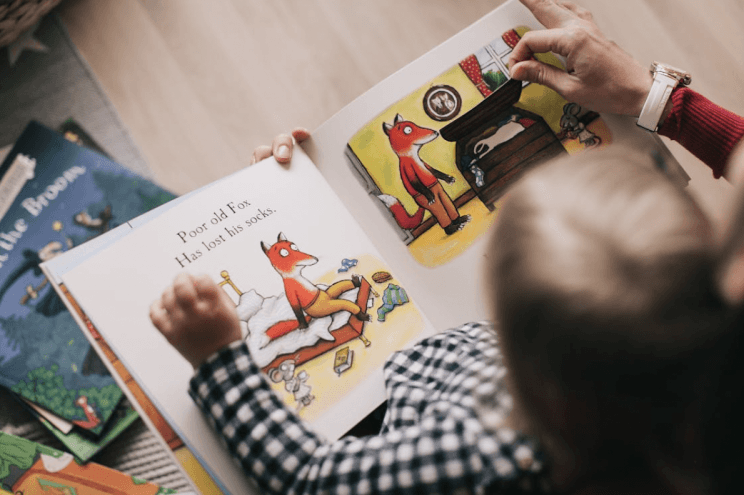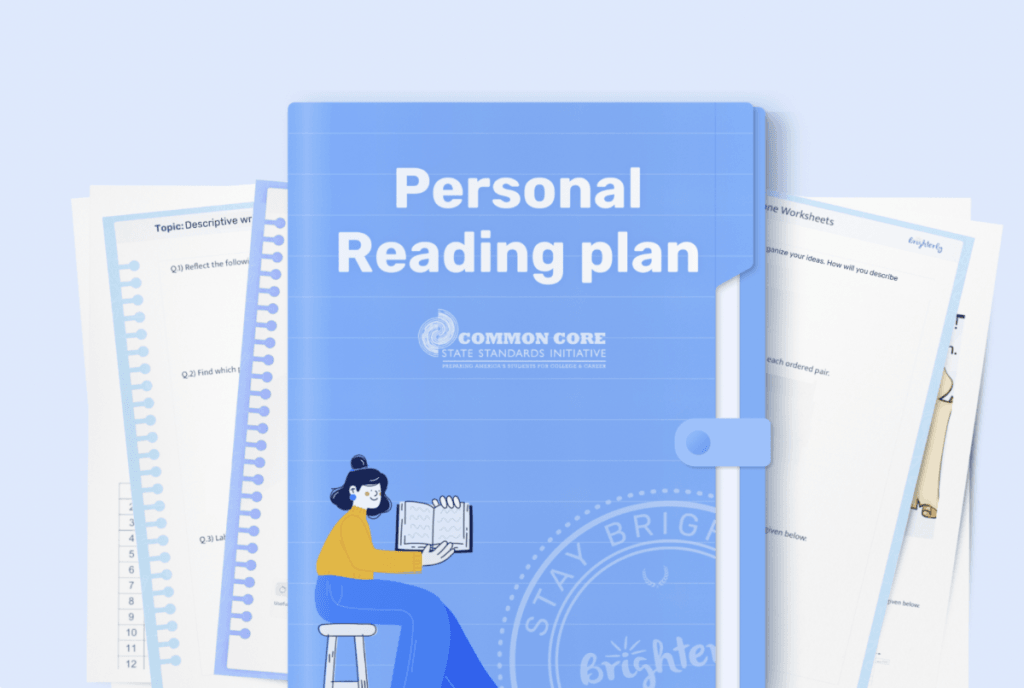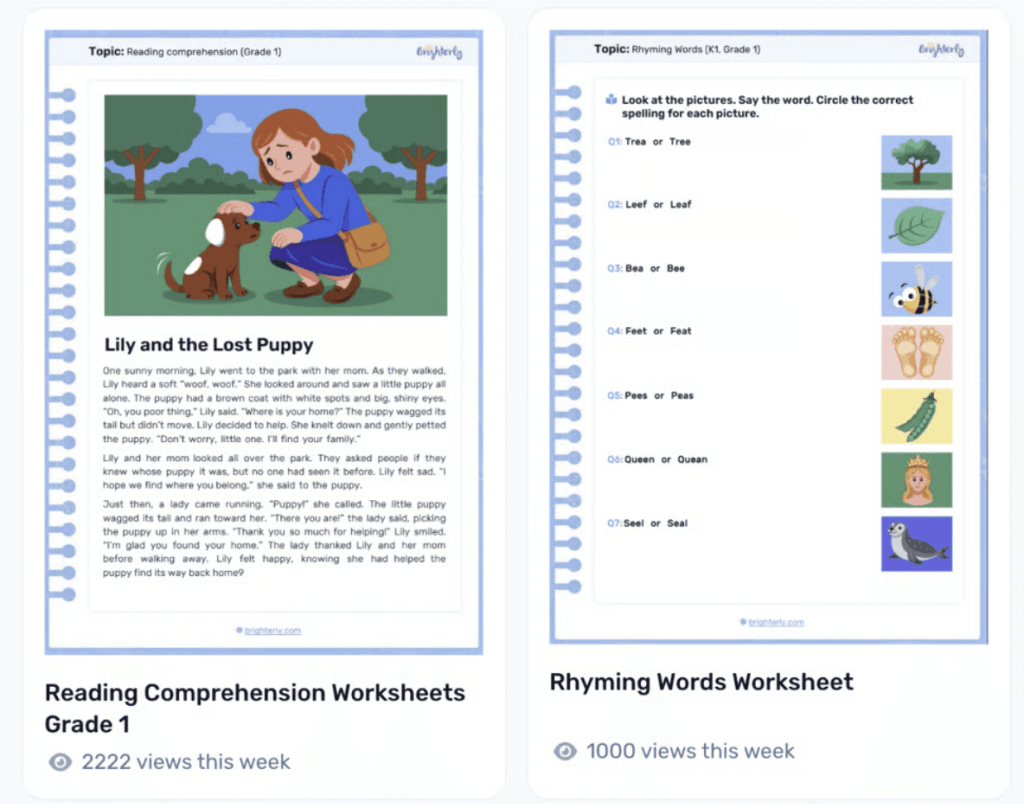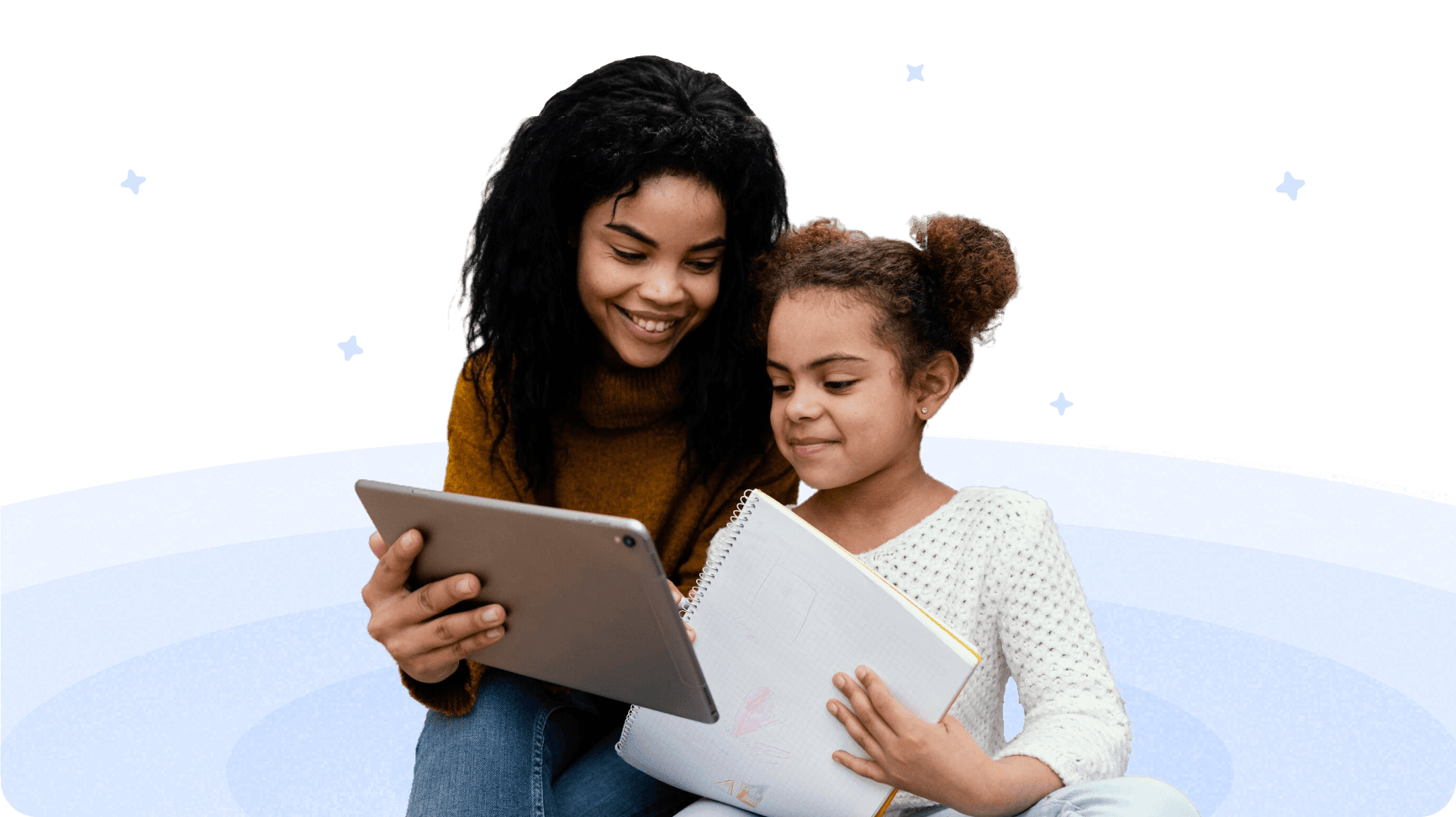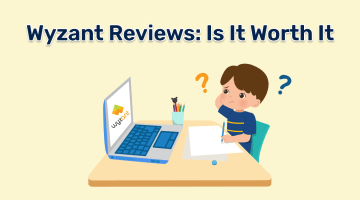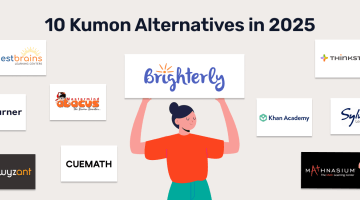Science of Reading for Parents: Simple Tips to Help Children Thrive
reviewed by Marvi M. Andres
Updated on September 16, 2025
In a classroom full of students, it can be easy for kids to lose focus and get discouraged when learning to read. This is why parents need to understand the science of reading to intervene and boost their children’s reading skills. Drawing on proven insights from the science of reading for parents, I share my top reading at home tips to support your child’s reading.
Key points
- Science of reading is a research-based method about how children learn to read and what techniques work best for them.
- Brighterly is an online educational platform for K-9 students that is grounded in the Common Core and the science of reading techniques.
- The best 5 strategies to teach kids according to the science of reading include using printable reading worksheets, encouraging kids to write, asking questions about what they read, reading aloud, and practicing phonics and letter-sound connections daily.
What is the science of reading for parents today, and why should every mom and dad know about it?
The science of reading for parents (SoR) refers to research-based methods on how children actually learn to read, and what techniques work best for them. One thing you should know is that it’s not a curriculum or an educational program, but rather specific knowledge derived from psychology, linguistics, and neuroscience to explain how children’s brains process language.
I know this may sound a little confusing — so let’s see how it works in practice. The science of reading information for parents can help answer questions like:
- Why is my child so bad at reading?
- What kind of technique should I use?
- Can I support my child at home, and how?
- Should I outsource reading to professional tutors?
The good news is that, thanks to its findings, educators can move from ineffective approaches to a more natural way of teaching. The bad news is that most parents are still unaware (understandably so!) of these findings, and may rely on outdated and ineffective methods at home.

Some of you may be discouraged, thinking, “What do parents need to know about the science of reading?” and “How do I do that without being a trained tutor?”. I get it — it all may seem like Greek to an ordinary mom and dad, but I’ll cover everything you need to know in this article.
Note: Reading is not natural. Unlike speaking, humans have to learn and rewire their brains to learn to read, in other words, connect visual symbols with sounds and meanings. This is what the science of reading is for.
Why is the science of reading important for your child’s success?
The science of reading is important for your child’s success because it provides proven, research-based ways to teach. In contrast to previous “whole language” techniques, SoR focuses on concepts like phonics, gradual instruction, and early intervention (before knowledge gaps are formed).
The science of reading strategies for parents are designed so parents can help their children build strong skills from day 1, empower a love for learning, and develop confidence.
Note: The Brighterly reading and math platform for K-9 students utilizes the most up-to-date, evidence-based reading techniques to help children achieve reading proficiency.
What age is the science of reading for?
The science of reading is relevant for almost any age, but it’s most important for early childhood.
Science of reading for preschool (3–5 years old) |
Working on phonemic awareness and vocabulary. |
Kindergarten – 2nd grade |
Working on phonics, decoding, and fluency. |
8+ years old children |
If kids struggle with overall reading, dyslexia, or reading gaps, structured literacy is advised. |
What are the five components of the science of reading?
The five components of the science of reading are phonemic awareness, phonics, fluency, vocabulary, and comprehension. Each of the components focuses on specific areas like phonological relationships between letters, manipulating sounds in spoken words, etc.
If you’re looking for the ordinary parents guide to teaching reading, these 5 components will provide you with a clear roadmap.
Benefits of a science of reading approach
- Cognitive development — the methodology helps develop critical thinking, imagination, and problem-solving skills, while also boosting association, memory, and attention to detail.
- Effective teaching — science of reading handout for parents provides evidence-based methods for effective instruction to support kids in school and at home.
- Strong reading foundation — science of reading resources allow building on explicit, structured instruction, which then creates a solid academic foundation.
- Early intervention — provides the tools to identify reading struggles early, allowing for targeted intervention.
- Long-term results — the science of reading is designed to develop reading proficiency by the 3rd grade, which impacts lifelong academic success.
How can parents support their child’s learning with the science of reading program at home?
Parents can support their child’s reading at home by focusing on the five key components (phonemic awareness, phonics, fluency, vocabulary, and comprehension). Short, structured activities work best — reading aloud, playing word games, and discussing stories.
One of the science of reading tips for parents I personally can give is hiring professional reading tutors. An expert tutor can provide targeted support based on the science of reading principles without overwhelming parents. With a custom schedule and relevant techniques, you can ensure your child practices the right skills at the right time.
How do structured reading programs work?
If you search for science of reading resources for parents, you’ll likely come across a variety of online reading platforms offering structured support. They are excellent because they will customize your tutoring schedule and teach your child to read in accordance with the science of reading and sight words principles.
In other words, these platforms provide targeted practice to help children build structured skills and use them confidently. Brighterly reading program is definitely the choice to consider among others.
What is Brighterly?
Brighterly is an online educational platform that provides US students with 1:1, fully personalized reading support in compliance with the science of reading and the Common Core standards.
This is the best reading program for kids, where students strengthen both foundational and advanced reading skills through an interactive, gamified approach.
Brighterly is also an optimal solution for parents who want to connect to professional reading tutors without draining their budget, and jumping through hoops to build a suitable schedule. Over 200K parents have already joined Brighterly, and their satisfaction is evident in the average TrustPilot score of 4.5.
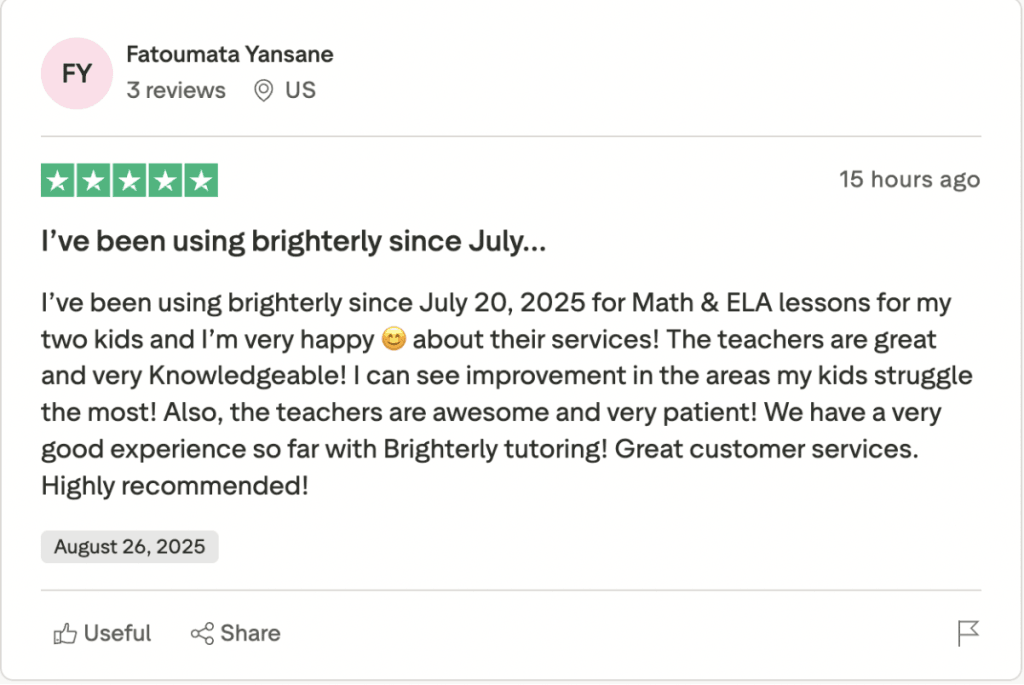
Why Brighterly is a perfect platform for most families?
Brighterly strictly aligns with the Common Core requirements. That means each student receives a learning plan that meets their school schedule, so that they can cover the right concepts at the right time. Additionally, Brighterly offers students a custom-designed program that closes learning gaps and fosters valuable learning habits. This is an optimal way for parents to enhance their children’s skills while maintaining consistent learning.
The standard tutoring rate in America is between $40 and $80, so the price can rise to $300 a month (one session a week). With such a severe price tag, it is understandable that most families seek alternatives. This is where Brighterly stands out, offering an affordable price starting at $17.30 per lesson (when choosing the extended 12-month plan with 3 lessons per week).
More facts about the Brighterly reading program
- The educational team regularly updates the platform’s curricula with evidence-based study resources, data, and relevant learning techniques.
- Parents receive detailed progress reports each month, allowing them to see what their child is learning, how they are improving, and which skills still require attention.
- Brighterly’s reading resources for parents are designed for elementary, middle, and high school students. They can build essential reading skills, from phonemic awareness and word recognition to literary analysis and argument evaluation.
5 science of reading tips for parents
- Use printable science of reading worksheets
- Encourage your kid to write
- Ask questions about what they read
- Read aloud with your child and discuss the story
- Practice phonics and letter-sound connections every day
#1 Use printable science of reading worksheets
Best for: Any age
Reading worksheets are excellent resources to help kids get a little bit of extra practice. They provide structured, step-by-step activities that focus on a specific skill that needs reinforcement. The best thing about it is that you can find them online — for example, on Brighterly.
Brighterly worksheets as a parent handout for reading at home
Brighterly’s team has created hundreds of reading worksheets for different levels — they are all printable PDFs for grades 1-9. The best thing is that you can get them without creating an account or entering a credit card — it comes in handy for parents looking for free science of reading resources.
Want to make learning more effective? Encourage your kid to take Brighterly’s reading tests and assess their English language skills hassle-free.
Note: The science of reading parent handout isn’t just regular activities — they’re based on research about how the brain actually learns to read, making practice both purposeful and effective.
#2 Amplify science of reading with writing
Best for: Any age
Writing is crucial for sound-letter connections, powered by the science of reading sight words it builds fluency. Most literacy resources for parents encourage children to write — each attempt makes reading more automatic.
How is writing one of the most crucial reading at home tips for parents?
Speaking broadly, writing is what helps children connect sounds to letters, improve vocabulary, and comprehension. Additionally, writing reinforces reading concepts and makes overall learning more active and fun.
Practical ways to use writing literacy resources for parents
Ask your kid to write letters (start small!), words, short sentences, or even simple stories — it boosts their reading in the best possible way. Do it several times a week: there’s no need to overwork your child.
#3 Reading at home tips for parents: Ask questions
Best for: Ages 5+
This method builds comprehension, critical thinking, and encourages interest and a positive attitude towards reading by connecting it to real-life experiences.
Reading tips for kindergarten parents: How asking questions helps parents boost their child’s reading skills?
Open-ended questions help kids look at the story they’ve just read in a different way, and for parents, it’s an easy way to understand whether the children have understood it. This creates a balanced approach to reading, making it more interactive.
Practical tips for parents to help with reading at home by asking questions
Here’s how you can help with reading at home by asking questions:
- Organize discussions, trying to dig deeper into specific text details
- Talk about the characters and the setting
- Discuss why a specific event happened.
#4 Read aloud with your child and discuss the story
Best for: 5–8
Reading aloud is the simplest way to improve the accuracy of reading. It’s all about reading stories with your child, talking about the plot, characters, and feelings. It strengthens comprehension, vocabulary, and critical thinking skills.
How does reading aloud help parents boost their child’s reading skills?
Reading aloud and discussing the story provides kids with learning benefits like:
- Helps kids hear how words sound and how sentences flow
- Builds active listening
- Boosts vocabulary and fluency skills.
Reading tips for parents of elementary students: Practical ways to use reading aloud
Create a system or a routine where you read a story or a book aloud together. Once you’re done, discuss the story in detail: talk about the plot, characters, and feelings.
#5 Practice the science of reading phonics and letter-sound connections every day
Best for: Early grades (ages 4–7)
Practicing phonics means helping kids understand how letters match words. Daily phonics practice helps children strengthen reading skills through short, consistent practice.
How does practicing phonics help parents boost their child’s reading skills?
Practicing phonics and letter-sound connections helps kids lay a strong foundation for reading and builds orthographic knowledge. Just one session a day boosts kids’ decoding skills and builds confident reading habits.
Practical ways to practice phonics and letter-sound connections
Here are some practical ways to help children practice phonics:
- Use flashcards, singing rhymes, or spotting letters during everyday activities
- Read simple decodable books
- Play “I spy” with beginning letters.
Now, if you need more on how to teach kids to read, check out the How to Teach Kids to Read: 11 Best Strategies for All Literacy Levels article.
Conclusion
To sum up, the science of reading is a research-based method that investigates how children learn to read and what teaching techniques work best for them. More specifically, it focuses on phonemic awareness, phonics, fluency, vocabulary, and comprehension. If you’re struggling to help your child with reading, the principles of SoR may be just right for you. After all, they aren’t that difficult to implement, either.
Addressing a tutoring platform like Brighterly is one of the most effective and long-lasting methods to bring the science of reading methods home. How? Through fun, personalized, and Common Core-aligned lessons that stick.
Want to try? Book reading class today — the first lesson is free!

